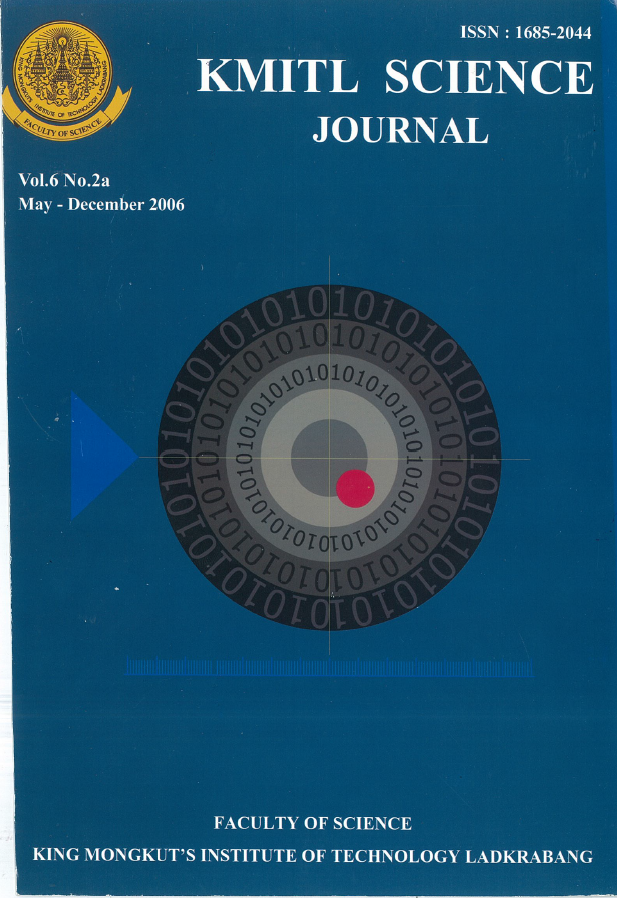Performance Statistics for Recurrent Neural Networks on Stock Prices Forecasting
Main Article Content
Abstract
Forecasting the behavior of complex systems has been a broad application domain for neural networks. In particular the recurrent neural networks has been widely studied, to extend this study with specific emphasis on the topic of stock prices forecasting. Since how to accurately forecast stock prices is become more important and challenging the marketers are competition increase. In order to evaluate the performance of recurrent neural networks, the three performances statistics are discussed. In terms of Efficiency Index, Mean Absolute Deviation and Maximum Relative Error, an experiments carried out by means of the use of stock prices and volumes for the fully recurrent neural network and two partially recurrent neural networks training with an online algorithm. The result found that mostly Efficiency Index and Mean Absolute Deviation are suitable used to indicate the overall recurrent neural network performance.
Keywords: forecasting recurrent neural networks, performance statistics, Efficiency Index, Mean Absolute Deviation, Maximum Relative Error
Corresponding author: E-mail: suwarin@rmut.ac.th , suwat@rmut.ac.th
Article Details
Copyright Transfer Statement
The copyright of this article is transferred to Current Applied Science and Technology journal with effect if and when the article is accepted for publication. The copyright transfer covers the exclusive right to reproduce and distribute the article, including reprints, translations, photographic reproductions, electronic form (offline, online) or any other reproductions of similar nature.
The author warrants that this contribution is original and that he/she has full power to make this grant. The author signs for and accepts responsibility for releasing this material on behalf of any and all co-authors.
Here is the link for download: Copyright transfer form.pdf
References
[2] Chu, C.H. and Widjaja, D. 1994 Neural Network System for Forecasting Method Selection, Decision Support Systems, 12, 13-24.
[3] Neural Ware, Inc. 1991 Neural Computing, Neuralworks Professional II Plus and Neuralworks Explorer. Pittsburgh.
[4] Narendra, K.S. and Parthasarathy, K. 1990 Identification and Control of Dynamical Systems using Neural Networks, IEEE Transactions on Neural Networks. 1(1), 4-27.
[5] Fransconi, P. Gori, M. and Soda, G. 1992 Local Feedback Multilayered Networks, Neural Computation, 4(1), 120-130.
[6] Medsker, L.R. and Jain, L.C. 2000 Recurrent Neural Networks: Design and Application. Florida, The CRC press.
[7] Atiya, A.F. and Parlos, A.G. 2000 New Results on Recurrent Network Training: Unifying the Algorithms and Accerating Convergence, IEEE Transaction on Neural Networks, 11(3), 697-709.
[8] Yamamoto, Y. and Nikiforuk, P.N. 1999 A Learning Algorithm for Recurrent Neural Networks and Its Application to Nonlinear Identification, Proceeding of IEEE International Symposium on Computer Aided Control System Design, 551-556.
[9] Makridakis, S. Wheelwright, S.C. and McGee, V.E. 1983 Forecasting: Methods and Applications. 2nd Edition. New York, John Wiley.
[10] Gorr, L. 1994 Research rospective on Neural Network Forecasting, International Journal of Forecasting, 10, 1-4.
[11] Hann, T.H. and Steurer, E. 1996 Much Ado About Nothing Z. Exchange Rate Forecasting: Neural Networks vs. Linear Models Using Monthly and Weekly Data, Neurocompting, 10, 323-339.
[12] Foster, W.R. Collopy, F. and Ungar, L.H. 1992 Neural Network Forecasting of Short, Noisy Time Series. Computers and Chemical Engineering, 16(4), 293-297.
[13] Cottrell, M. Girard, B. Girard, Y. Mangeas, M. and Muller, C. 1995 Neural Modeling for Time Series: A Statistical Stepwise Method for Weight Elimination, IEEE Transaction on Neural Networks 6(6), 1355-1364.
[14] Armstrong, J.S. and Fildes, R. 1995 Correspondence: On the Selection of Error Measures for Comparisons among Forecasting Methods. Journal of Forecasting, 14, 67-71.
[15] Nash, J.E. and Sutcliffee, J.V. 1970 River Flow Forecasting Through Conceptual Models, Journal of Hydrology, 10, 282-290.


